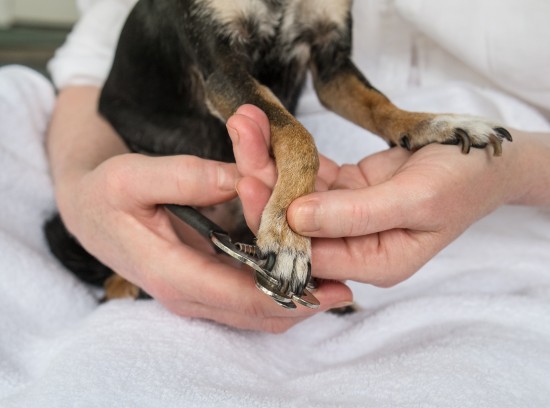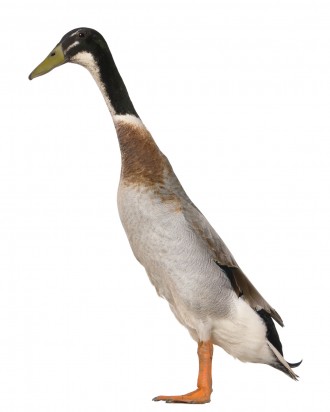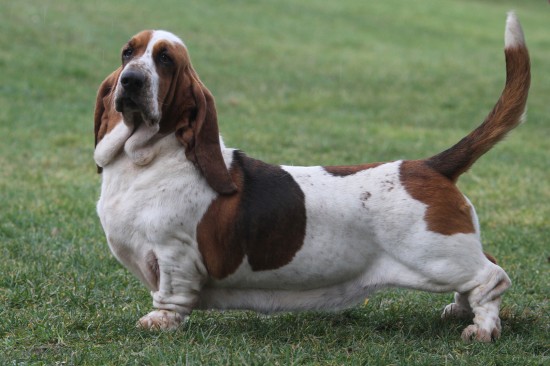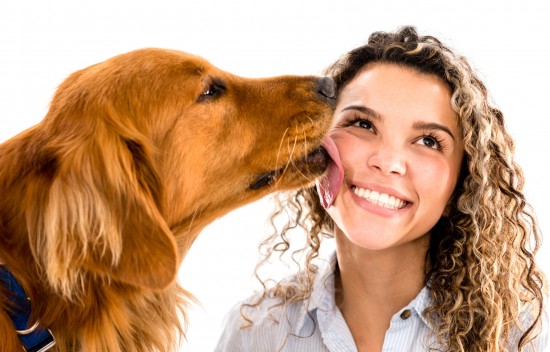

If you have ever trimmed your dog’s toenails at home and accidentally cut into the quick of the nail, you will no doubt be aware of how prolifically those nerve-rich nail endings can bleed! This can be quite alarming to witness and can take quite some time and effort to staunch the bleeding, something that you will of course be keen to avoid if at all possible!
As well as potentially cutting the nail with a nail trimmer, dogs are apt to sometimes injure their nails on their own, by either splitting, tearing or breaking the nail, leading again to prolific bleeding and quite a mess!
Whatever type of dog you own, it is a good idea to get familiar with how to treat or manage a dog’s broken nail at home, in order to potentially avoid a costly trip to the vet, or to keep things clean and the bleeding under control before you get to the clinic.
Read on to learn how to treat a split or broken nail in the dog at home.
If your dog has split, broken or ripped their nail bed, the chances are that you will know all about it very quickly! As well as having a tendency to bleed prolifically, a torn nail bed will also generally be rather painful and sore for your dog, and your dog will not usually be shy to let you know this! The nail itself may be totally severed, or may be hanging off loosely. If the latter is the case, your dog may actually chew off the remaining part of their own broken nail, in order to reduce the pain and problems associated with it catching on things and causing more pain.
A broken nail will leave the nail bed exposed, which is a sensitive area, and also one that is all too prone to developing infections. While the bleeding that comes from the nail bed can be frightening to see in terms of the sheer amount of it produced, providing that your dog does not suffer from a blood clotting disorder, it is generally not as alarming as it looks, and is bleeding from blood vessels rather than arteries.
Your dog is likely to find their paw very sore and painful, and possibly be very reluctant to let you handle it. You will need to secure and restrain your dog in order to deal with the problem, and regardless of their breed or normal temperament, muzzling is recommended, as even the nicest of dogs may snap when in pain!
First of all, inspect the injured area so that you can see what you are dealing with. Try not to poke at or touch the paw any more than necessary at this stage; the aim is to identify if there is any hanging nail remaining that will need to be removed, and to work out what you need to do next.
If there is a broken or split nail still in place, you will need to attempt to remove this; if not, you can move onto the next stage.
If the nail is broken, split or still partially present, you will need to snip this off, but this is not always as simple as it sounds!
Removing the damaged nail is important to prevent further injury, and to allow the new nail regrowth to come into place over time normally and without malformation. Only attempt to remove the remaining nail if you are confident in doing so and can see what you are doing; also, if your dog appears very frightened, aggressive or as if they are going into shock, try to stem the bleeding and take them to the vet for your vet to deal with it.
Getting your dog to keep still and well restrained as well as allowing you to see what you are doing when you go to snip off the remaining nail is the largest challenge, but once you have established how you are going to do this, the actual removal with nail clippers should be relatively fast.
As mentioned, ripped or torn nails bleed prolifically, and while this is not generally a serious problem that will threaten your dog’s health, stopping the bleeding is of course important!
Hopefully you have a basic dog first aid kit to hand, and one of the most useful pieces of kit to keep within it is a styptic powder of pencil; these are devices that help to coagulate small cuts quickly and stem the bleeding, allowing the wound to heal. If you don’t have anything like this to hand, use a clean, sterile dressing held onto the wound until the bleeding slows; this may take some time, so be prepared to persevere!
While dog’s feet are dirty places that are apt to pick up all manner of dirt and bacteria, the bleeding itself will have done a great job of flushing potential toxins out of the wound naturally. However, you must still clean and disinfect the area thoroughly after the bleeding has stopped, both to prevent the possibility of infection, and to allow you to make an informed decision on whether or not the injury requires veterinary treatment.
Use a gentle, dilute disinfectant on the wound, and nothing harsh or abrasive; sea salt and warm water is fine, as is pretty much any disinfectant designed for use on children’s cuts. Gently clean the wound, taking care not to re-open the cut, and if necessary, place a dressing over the toe to allow it time to heal.
If the cut is deep, has sharp edges, has a foreign body in it or bleeds repeatedly, take your dog along to the vet for a check-up.
Once you have stopped the bleeding and cleaned the wound as well as possible, it is also strongly advised to take your dog along to the vet anyway, just to check that everything has gone to plan and that your dog will heal normally.
 Dogs And Their Eye Contact With Each Other, And What This Means
Dogs And Their Ey
Dogs And Their Eye Contact With Each Other, And What This Means
Dogs And Their Ey
 A Brief Look At Delightful Indian Runner Ducks
A Brief Look At D
A Brief Look At Delightful Indian Runner Ducks
A Brief Look At D
 First Aid For Cats
First Aid For Cat
First Aid For Cats
First Aid For Cat
 Basset Hound Health Considerations
Basset Hound Heal
Basset Hound Health Considerations
Basset Hound Heal
 Dogs And Licking - How To Stop Your Dog From Licking You
Dogs And Licking
Dogs And Licking - How To Stop Your Dog From Licking You
Dogs And Licking
Copyright © 2005-2016 Pet Information All Rights Reserved
Contact us: www162date@outlook.com